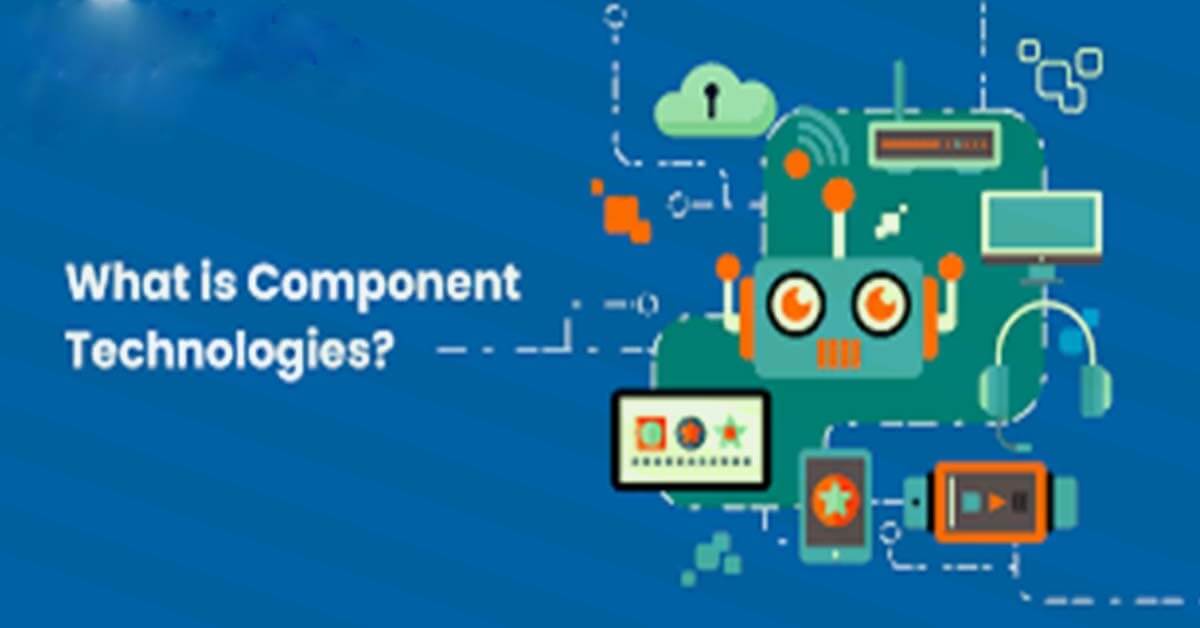Introduction
In the ever-changing world of software development, Component Technologies have become a game-changer. They give developers the ability to create complex applications by breaking them down into smaller, reusable parts. Think of these parts like building blocks that allow developers to build advanced software systems.
Understanding Components
So, what are components? In the software world, they are like smart, reusable tools that perform specific tasks. They hide the complicated details and let different parts of the software talk to each other through clear rules.
The Core of Technology
Component Technologies change the game by turning big, complicated applications into smaller, modular systems. Developers can now put together applications using pre-built, specialized parts. These parts, designed for specific jobs, can be used in different applications. Standard rules help smoothly connect these components into one system, making development faster and more efficient.
Library Types in Component Technologies
The foundation of Component Technologies relies on different types of libraries that provide essential building blocks. Let’s look closer at these library types:
Class Libraries
They are like ready-made code collections that help developers with common tasks such as handling user input or processing data. Developers love them because they work across different programming languages.
Framework Libraries
These go a step further than class libraries, giving a complete structure for building software applications. They include ready-made code and guidelines for making scalable and easy-to-maintain applications, often used in web development.
Component Libraries
These libraries are all about reusability. They contain pre-built parts, like user interface controls or data processing units, to speed up development by providing ready-made code for building complex applications.
Component Types in Component Technologies
To really understand Component Technologies, let’s look at different types of components and their real-world examples:
Application Programming Interfaces (APIs)
APIs help different software systems communicate without knowing each other’s details. An example is Google Maps APIs, which allow developers to use Google Maps in their applications.
Object-Oriented Programming (OOP)
OOP is a popular way of building software using objects that combine data and actions. Languages like Java, C++, and Python follow this approach.
Component Object Model (COM)
Developed by Microsoft, COM allows different software parts in Windows to talk to each other. Examples include Microsoft Office and Internet Explorer.
Service-Oriented Architecture (SOA)
SOA changes how software parts interact through web services. It breaks down components into functional units exposed as web services. Amazon Web Services is a notable example.
Microservices
This is a modern way of organizing software as small, independent components working together. Big companies like Netflix and Uber use this approach.
Best Practices for Developing Component-Based Systems
With the rise of component-based systems, some best practices have emerged:
Design Principles
- Build components that can work independently and can be easily replaced.
- Use common rules to make sure components can work together.
- Keep things simple to hide the complexity.
Development Strategies
- Use a component model like OSGi or COM to manage how components start and stop.
- Build and test components by themselves before putting them together.
- Use dependency injection to manage how components depend on each other, making it easier to change and update them.
Testing & Maintenance
- Test components automatically to make sure they work as expected.
- Use tools to find errors and performance problems.
- Plan ahead for updates to make sure components can be used for a long time.
Common Challenges & Solutions
Working with Component Technologies can be tricky, but there are smart ways to deal with common issues:
Issues with Component Integration
- Make sure components work well together by using common rules.
- Use dependency injection to manage how components depend on each other.
Complexity in Component-Based Systems
- Make things simpler by organizing components in a modular way.
- Use common rules to make components work well together.
Advantages of Using Component Technologies
Why are developers so excited about Component Technologies? Here are some reasons:
1. Time Savings
Components make development faster by providing ready-made parts. Developers don’t have to start from scratch every time, speeding up the process.
2. Reusability
Reusing code reduces duplication, keeps things consistent, and makes development more efficient and manageable.
3. Flexibility
Component-based applications can change as business needs change. Developers can modify parts without affecting the whole application.
4. Better Collaboration
Teams can work together more efficiently, building complex applications in a coordinated way. Components let different team members work on different things at the same time.
5. Scalability
Components make it easy to adjust applications to handle more or fewer tasks. Whether growing to serve more users or scaling down for efficiency, components allow flexibility.
Disadvantages of Component Technologies
But, like any tool, Component Technologies have their challenges:
1. High Cost
Pre-built components often come with a price, including licensing fees. Developers need to consider costs before choosing specific components.
2. Complexity
Managing updates and making sure different components work together can be tough. Developers need to carefully plan to avoid problems.
3. Performance
Components may make applications bigger, affecting performance, especially on mobile devices. Balancing flexibility and performance is important.
4. Security
Using pre-built components carries the risk of hidden problems that could be exploited by bad actors. Making sure components are secure takes time and attention.
5. Dependency
Using pre-built components can lock a company into a specific vendor. This lack of flexibility can be a challenge.
Future Trends & Innovations in Component Technologies
As Component Technologies keep evolving, new trends and innovations are shaping their future:
Microservices Architecture
This approach, using small, independent components to build large systems, is gaining popularity. It brings flexibility and easier updates.
Serverless Computing
Serverless computing lets developers write and use code without worrying about managing the infrastructure. It offers flexibility and cost efficiency.
Enhanced Compatibility & Interoperability
Efforts to make components work well together are ongoing. Common rules and increased collaboration make integration smoother.
New Component Models & Programming Paradigms
Innovative ways of organizing components are emerging. New frameworks may simplify how components come together.
Artificial Intelligence & Machine Learning Integration
AI and machine learning are becoming more important. They can help automate how components are created and used, streamlining the development process.
Final Thought
In conclusion, Component Technologies stand at the forefront of a transformative era in software development. These innovative tools empower developers to construct sophisticated applications by breaking them into reusable components. From libraries facilitating code reuse to diverse component types fostering collaboration, the landscape of software development has evolved significantly.
The advantages of Component Technologies, such as time savings, reusability, flexibility, and scalability, are evident. However, challenges like cost considerations, complexity management, and security concerns must be navigated judiciously.
Looking ahead, the future of Component Technologies holds promise with trends like microservices, serverless computing, enhanced compatibility, and AI integration. As developers embrace these advancements, they are poised to shape a dynamic and efficient future for software innovation.
In this ever-evolving realm, staying attuned to emerging trends, adopting best practices, and embracing new technologies will be crucial. Developers, driven by a collaborative spirit, will continue to push boundaries, explore new frontiers, and pioneer solutions. The journey of software development, guided by Component Technologies, reflects an ongoing quest for improvement, efficiency, and adaptability, ensuring a vibrant and innovative digital landscape.



